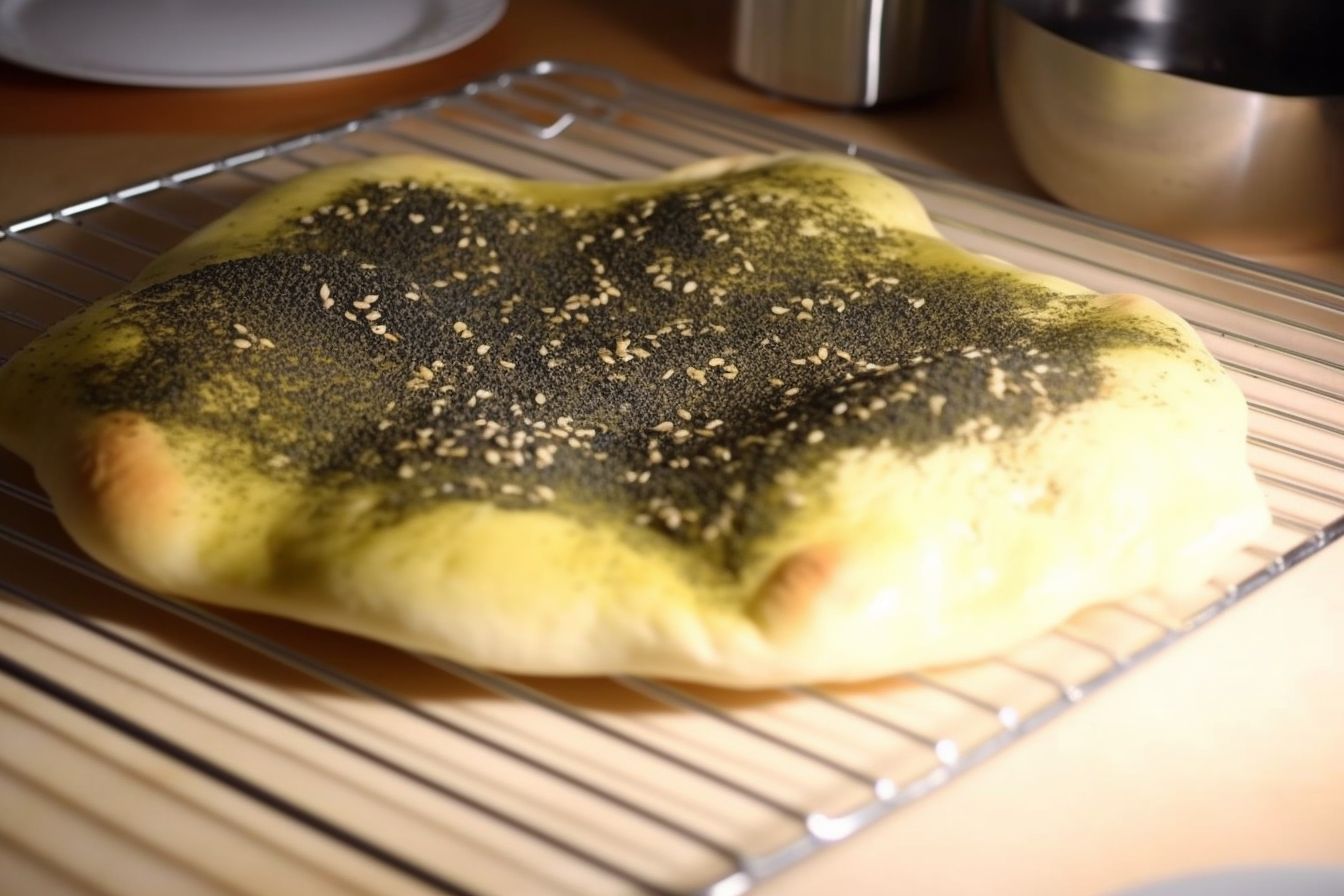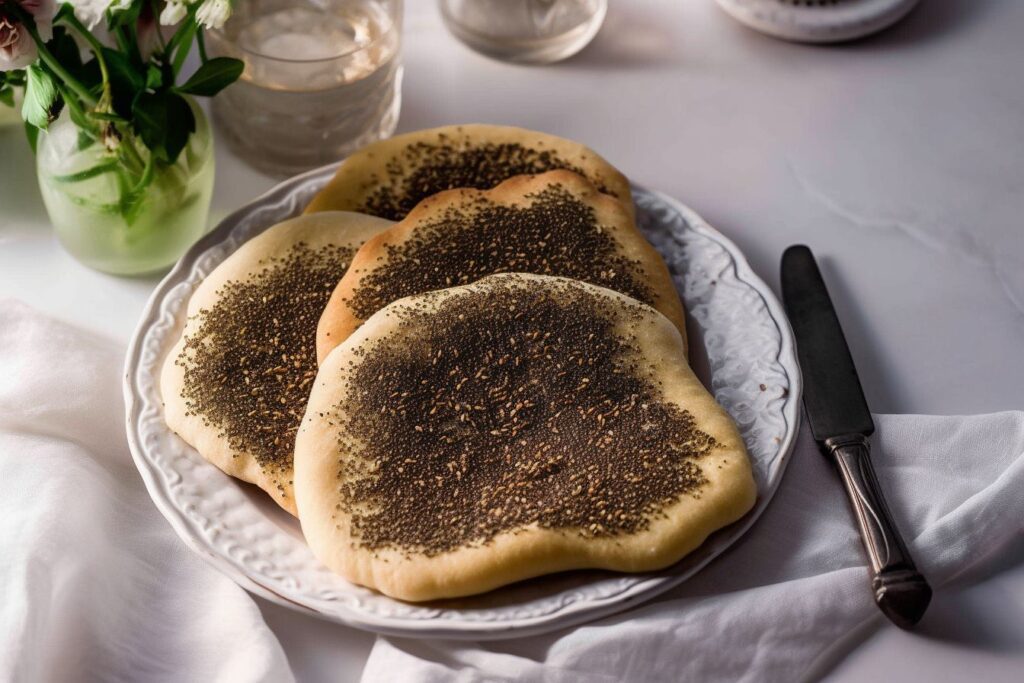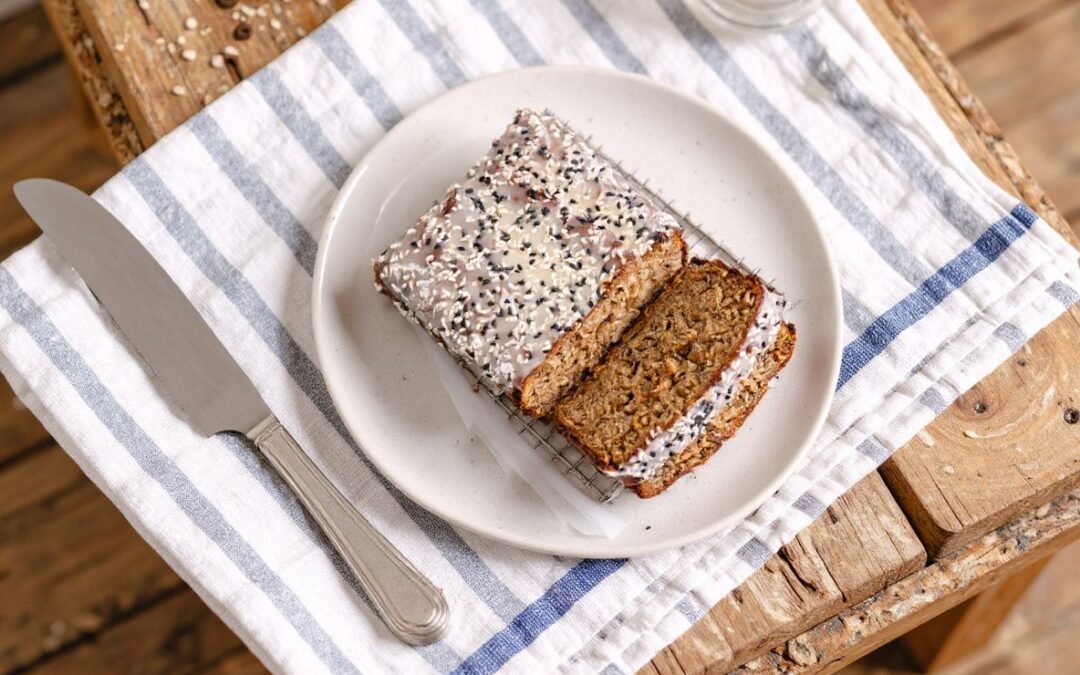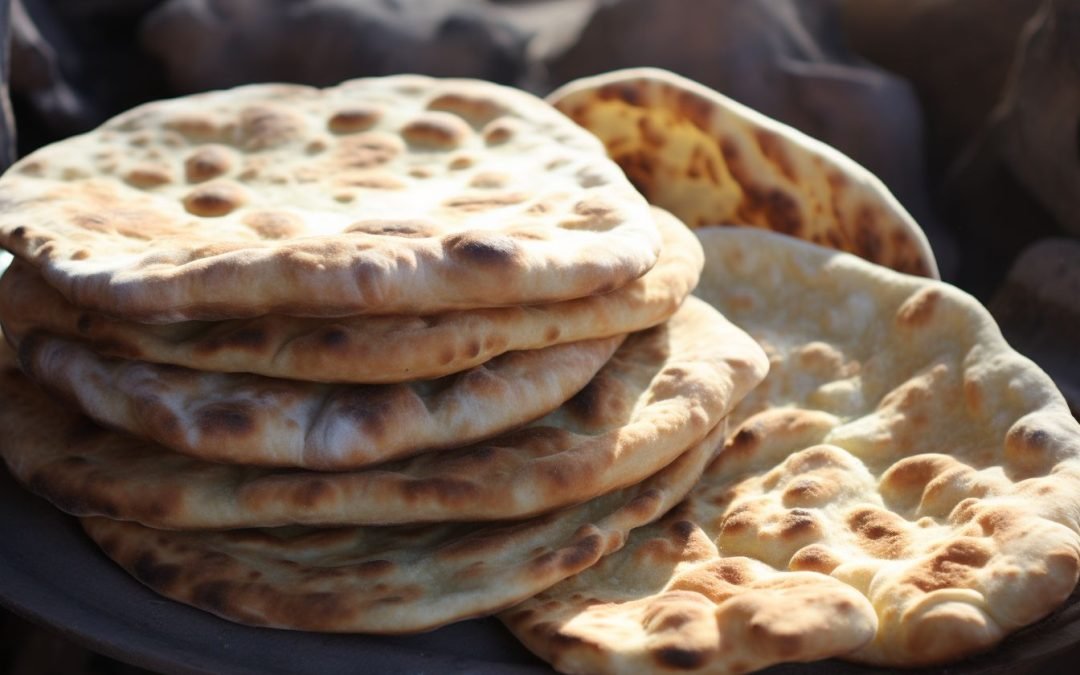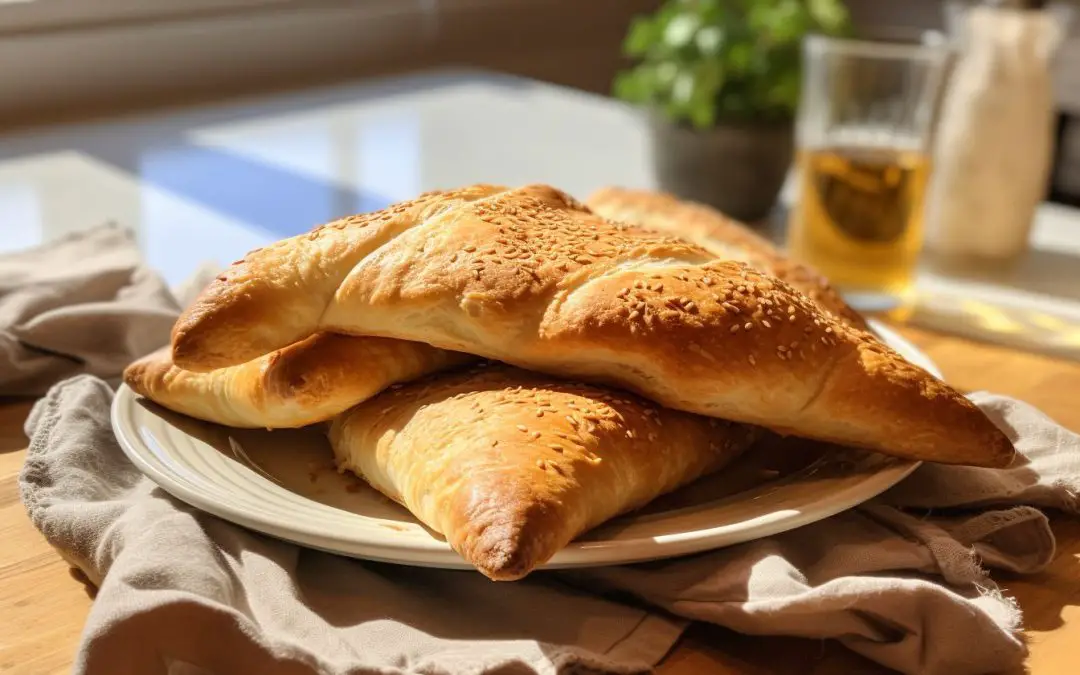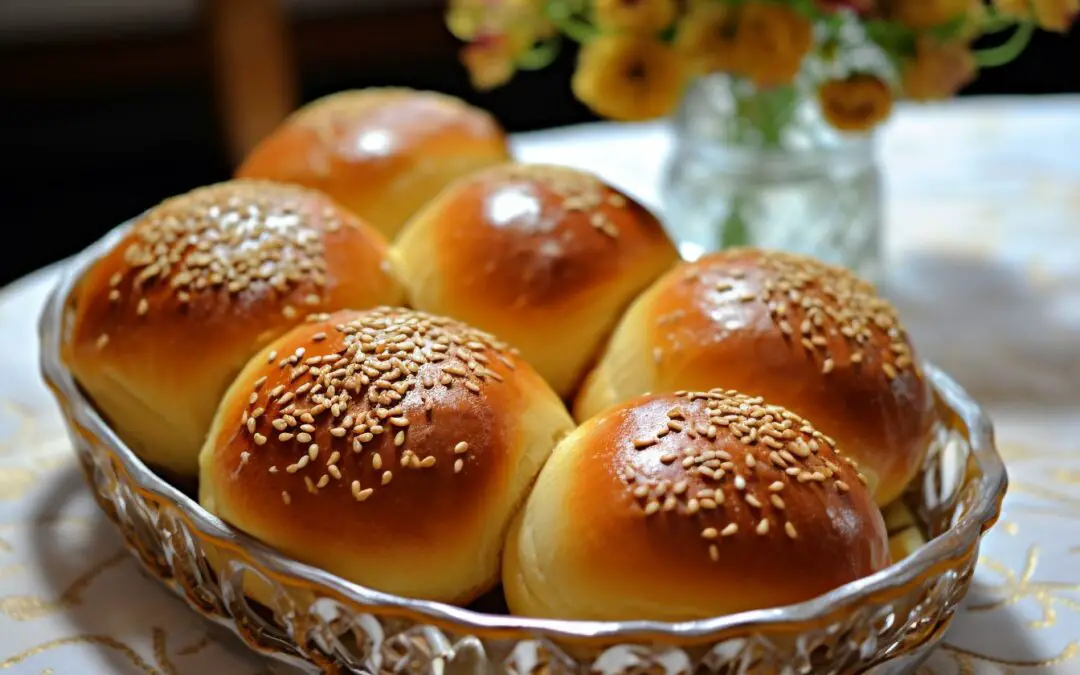Embark on a culinary adventure as we unveil the secrets of a mouthwatering Middle Eastern cheese and zaatar flatbread (aka manakish). Join me in Vienna, where an unexpected encounter led to acquiring a coveted recipe. In addition, discover the harmonious blend of flavors as a delicate dough meets a medley of cheeses, aromatic za’atar, and nigella seeds. Let this tantalizing journey transport you to the heart of Middle Eastern cuisine!
As the morning sun painted the streets of Vienna with a gentle golden hue, my family and I found ourselves exploring the vibrant city’s culinary delights. We stumbled upon a Middle Eastern restaurant, lured in by the enticing aroma of exotic spices and the promise of flavorful dishes. However, little did we know that our visit would lead to an unexpected adventure unveiling the secrets of a mouthwatering Middle Eastern cheese and za’atar flatbread.
As we settled into the restaurant’s cozy seats, our journey took an unexpected turn when one of the cooks accidentally set off the fire alarm amidst the bustling kitchen activity. Chaos ensued as the restaurant filled with flashing lights and blaring sirens. While some diners panicked and rushed for the exits, we remained calm, intrigued by the unfolding drama. During this unexpected commotion, I saw a young Middle Eastern guy hastily assembling a flatbread, his hands moving with deftness and precision.
Before we bid farewell to the restaurant, my determination led me to approach the owner, an elegant figure who exuded an air of authority. With a glimmer of curiosity in his eyes, I pleaded for the recipe. After moments of deliberation, the owner, touched by our enthusiasm, finally relented and agreed to share the coveted recipe.
First, the recipe begins with a perfectly textured dough, a harmonious blend of flour, sugar, instant yeast, warm water, olive oil, and a pinch of salt. Once the dough had become perfect, it was time to shape it into the canvas for future flavors. Second, the real magic began with the cheese topping, combining fresh mozzarella and feta cheese, or the exquisite Akawi cheese, in a delicate dance of flavors. Finally, to complete the symphony of flavors, the za’atar topping was added—a fragrant mixture of extra virgin olive oil and a blend of herbs and spices. A sprinkle of nigella seeds, also known as Kolonji, provided a final touch of authenticity, elevating the dish to new heights.
The Middle Eastern cheese and zaatar flatbread is a versatile and delicious dish that can be enjoyed on its own. However, you can pair it with various accompaniments to create a complete meal. The followings are some suggestions for what you can serve alongside this flavorful flatbread. For instance:
Mezze Platter: Create a vibrant mezze platter by serving the flatbread with various Middle Eastern dips and appetizers. For example, include classics like hummus, baba ganoush, labneh, and muhammara. Add some stuffed grape leaves, olives, and pickled vegetables for a well-rounded spread.
Grilled Meats: Add some meats or kebabs to your meal for a heartier option. For instance, marinate chicken, lamb, or beef in Middle Eastern spices such as sumac, cumin, and paprika, then grill them to perfection. Serve these succulent meats alongside the flatbread for a satisfying and flavorful combination.
Fresh Salads: Balance the richness of the flatbread by serving it with refreshing and crisp salads. A traditional tabbouleh salad made with bulgur wheat, fresh herbs, tomatoes, cucumbers, and lemon dressing is an excellent choice. You can also try a Fattoush salad, which includes mixed greens, tomatoes, cucumbers, radishes, toasted pita chips, and a tangy sumac dressing.
Yogurt Sauce: Prepare a creamy and tangy yogurt sauce to accompany the flatbread. Mix plain Greek yogurt with minced garlic, lemon juice, chopped mint or dill, and a pinch of salt. This cooling and flavorful sauce complement the za’atar and cheese beautifully.
Middle Eastern Pickles: Add some tangy and crunchy Middle Eastern pickles to your meal. Serve pickled cucumbers, turnips, or mixed vegetables alongside the flatbread. Combining the pickles’ acidity and the flatbread’s savory flavors creates a delightful contrast.
Roasted Vegetables: Roast a medley of seasonal vegetables, such as eggplant, zucchini, bell peppers, and cherry tomatoes. Toss them with olive oil, garlic, and Middle Eastern spices like za’atar, cumin, and paprika. The roasted vegetables provide a flavorful and nutritious accompaniment to the flatbread.
Remember, the beauty of Middle Eastern cuisine lies in the abundance of flavors and textures. Feel free to mix and match these suggestions or explore other Middle Eastern dishes that suit your taste preferences. Whether you create a mezze feast, a hearty meal with grilled meats, or a refreshing salad spread, the Middle Eastern cheese and za’atar flatbread will be the star, bringing everything together with its aromatic and delicious presence.
Here is how I created the cheese and zaatar flatbread at home.
Ingredients:
- 2 ½ cups of all-purpose flour, along with an additional 2 tablespoons
- 1 tablespoon of granulated sugar
- 1 tablespoon of instant yeast
- 1 cup of warm water
- ¼ cup of olive oil
- 1 teaspoon of salt
For the cheese topping
- 340 grams of fresh mozzarella cheese (or you can substitute with Akawi cheese for an authentic Middle Eastern touch)
- 200 grams of feta cheese (also replaceable with Akawi cheese)
- 1.5 tablespoons of nigella seeds, also known as Kolonji
For the za’atar topping:
- ¼ cup of extra virgin olive oil
- 7 tablespoons of za’atar, which you can find at Middle Eastern stores
How to make Middle Eastern cheese and zaatar flatbread (aka manakish)?
To prepare the dough:
- Start by activating the yeast. Mix the yeast with 1 cup of warm water, ensuring the water is not too hot. Set it aside for 3 minutes to allow the yeast to activate.
- Combine 1 cup of flour, sugar, and the yeast-water mixture in a bowl. Stir well using a spoon, cover the bowl with plastic wrap, and let it rest for 10 minutes.
- After 10 minutes, add the remaining flour (1 ½ cups plus 2 tablespoons), ¼ cup of olive oil, and salt to the bowl. Mix until a shaggy dough forms.
- Transfer the dough to a floured surface and knead it with your hands for 3-4 minutes until it becomes smooth. Shape the dough into a ball, cover it, and let it rise for approximately 30 minutes in a warm place.
- Meanwhile, preheat your oven to 375°F (190°C) in preparation for baking the flatbreads.
Now, let’s move on to the toppings:
- In a separate bowl, combine the za’atar and olive oil, mixing them well. Set the mixture aside.
- In another bowl, mix the mozzarella cheese and feta cheese.
- Once the dough has risen, divide it into 10 equal-sized balls. Using a floured rolling pin, flatten each dough ball into a thin, medium-sized flatbread on a floured surface. Remember to make them thin as they will rise slightly during baking.
- Place the flattened dough rounds on a floured baking sheet. Depending on the size of your baking sheets, you may need to use multiple sheets or bake them in batches.
- Spread the za’atar mixture onto 5 flatbreads, covering the entire surface and leaving a ¼-inch border.
- Spread the cheese mixture onto 5 flatbreads, leaving a ¼-inch border. Sprinkle nigella seeds over the cheese topping.
- Position the baking sheets on the bottom rack of the preheated oven and bake for 12-15 minutes, or until the bottom of the flatbreads turns lightly golden. You can bake multiple sheets simultaneously by placing one on the bottom and middle rack. Once the bottom rack flatbreads are cooked, switch the middle rack sheet to the bottom rack for a few more minutes until fully cooked.
- You can broil the tops for a few minutes to lightly brown the cheese for the flatbreads. Keep a close eye on them, as broiling can happen quickly.
- Once baked, transfer the flatbreads to a platter and cover them with a towel or plastic bag to keep them soft until serving.
- For a refreshing and vibrant accompaniment, serve the flatbreads with fresh vegetables like tomatoes, cucumbers, mint, and olives.
Thank you for joining me on this culinary adventure, where the magic of Middle Eastern cuisine came alive through the captivating flavors of Middle Eastern cheese and zaatar flatbread. From the streets of Vienna to the comfort of your own kitchen, we embarked on a journey filled with unexpected encounters and treasured recipes. Happy baking!
